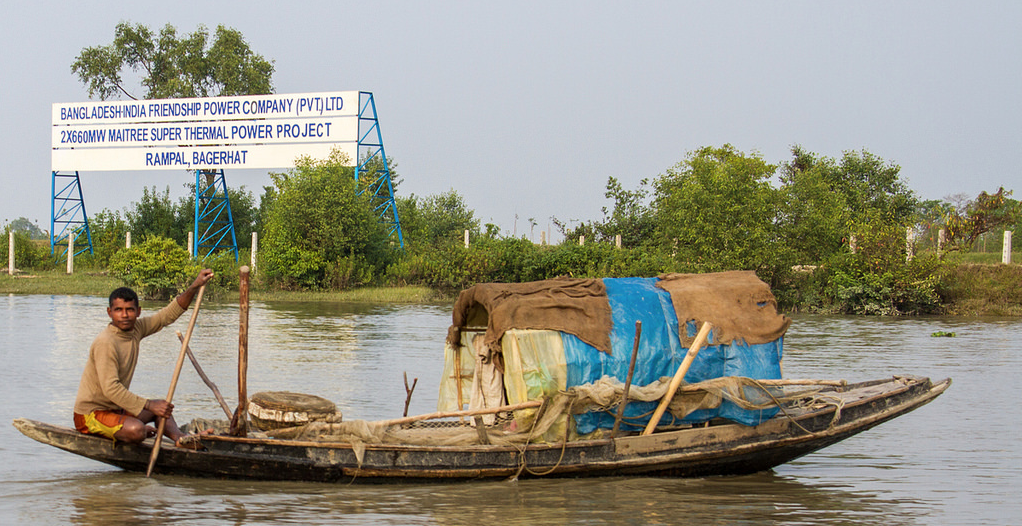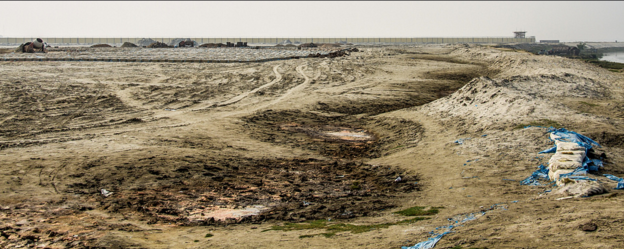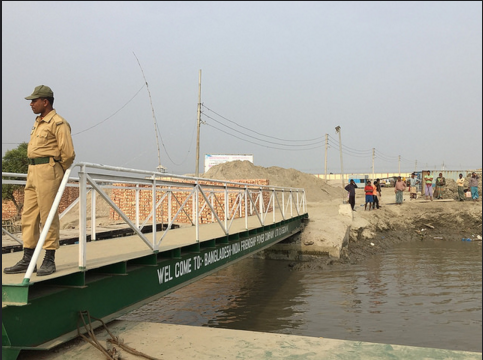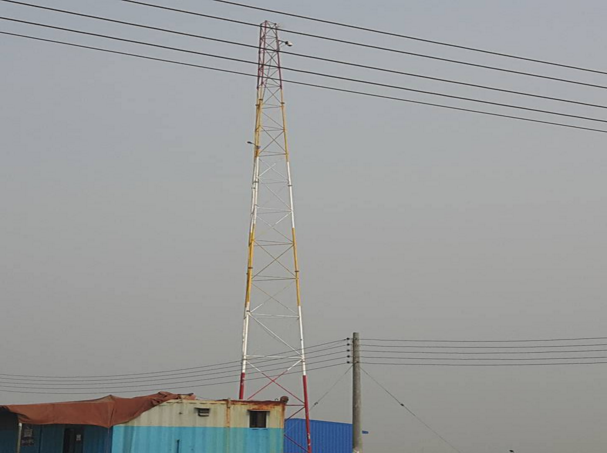Few days back I had a chance to visit Rampal, a small village in Bangladesh and now a site for a destructive coal fired power plant. “It has been estimated that more than one million people depend on the Sundarbans for their livelihood, many of whom work seasonally as fishermen and gather non-timber forest products that include nipa palm, honey, leaves and grass,” according to a 2015 report released by the finance industry watchdog BankTrack.
The name Sundarbans is a combination of two Bangla words, Sundar and Bans. Sundar means beautiful and Ban means forests. So Sundarbans means beautiful forests. It is the largest concentration of tidal halophytic mangrove forests in the world. Sundarbans covers about 10,000 square kilometres (3,900 sq mi), with most of Sundarbans in Bangladesh and the rest in India. South, east and western parts of Bangladesh are covered by mangrove forests and are also home to the endangered Royal Bengal Tigers. All this will be at stake if the Rampal power plant is built. The mangroves offer a natural guard against calamities like cyclones. Mangroves are also an essential breeding ground for a variety of fish and a valuable source of livelihood for the nearby villages. With a warming climate, the frequency of the cyclones have increased in Bangladesh. Sunderbans is also home to tigers, freshwater dolphins, and hundreds of other wildlife species.
Rampal Coal Power Project is a joint venture project by the Indian state owned National Thermal Power Corporation (NTPC) and Bangladesh state owned Power Development Board (PDB), named Bangladesh India Friendship Power Company (BIFPC). As per the latest report Indian power company Bhel (Bharat Heavy Electricals Limited) has been selected to construct the 1,320-megawatt coal power plant with financing from India’s Exim Import Bank. As an Indian I wonder what kind of friendship is this, built on the power of destructive coal. I would love a friendship built on the power of renewable energy. Can’t India help build a solar power station? A solar plant that will not cause harm and will not destroy the Sundarbans and Bangladesh is already taking steady steps in harnessing solar energy. According to a report on Clean Technica, Bangladesh has already installed home solar power systems to over 1.5 million Bangladeshi homes, or about 8.4 million people! The potential of harnessing on and off-shore wind energy, as well as biomass and biogas, remain largely unexplored. The question arises, “why coal’?

A fisherman goes home with his daily catch of fish but with the Rampal Thermal plant coming up, his livelihood is threatened. Photo: Joe Athialy
Part of the Sundarbans is also a UNESCO World Heritage Site and the Rampal coal-fired power plant is just 14kms away. Even in India, our environmental laws say any thermal project should be built 25kms away from any ecologically sensitive area. So why are we not following the same in Bangladesh?
It has been alleged that the Rampal power station is against The Ramsar Convention because the plant is to be built in a forest and sensitive wetlands area. The Ramsar Convention is the only global environmental treaty that deals with the preservation of wetlands. Bangladesh signed the convention in 1992. The Rampal plant will not only affect the environment. Thousands of people depend on the Sunderbans and the Poshur river that run through it for fish, honey and firewood.
During the visit we spoke to affected villages and some of the key points they made:
- Locals complained that their land was forcefully taken away for the project, while a few others who got compensation said it was below the market rate.
- False cases have been filed against people who had been protesting against the project and the forceful land grabbing by the Bangladeshi government.
- Fishermen who depend on the Poshur river for shrimp farming are not allowed to fish anymore.
- Labourers who worked at the project site have not been paid for the work they have done.
- The majority of the locals fear that the Rampal plant will destroy their crops and fish in the Poshur river. However, most of them are in fear of government reprisals if they raise their voice against the project
IMPACTS OF IMPORTING COAL
The plant will need to import 4.72 million tons of coal per year. This massive freight will need about 59 ships per year, each having 80,000-ton capacity that would be taken to the port on the bank of the Poshur river. The path from the port to the coal plant will cut through 40kms of the Sundarbans. Environmentalists claim these coal-carrying vehicles scatter large amounts of fly ash, coal dust and sulfur, and other toxic chemicals. The predictions made by environment and ecology experts are that the plant will release various toxic gases such as carbon monoxide, oxides of nitrogen and sulphur dioxide, thereby putting the surrounding villages and, most importantly, the Sundarbans at grave risk.
The villagers’ concern and fear are consistent with a report wrote by Prof. Anu Ahmed published on Bangladesh news, where he details how guidelines were sidestepped in setting up this project. Led by Prof. Anu Choudhury, The National Committee to Protect Oil, Gas and Mineral Resources and Power and Ports, an alliance of environmentalists, activists and local resistance leaders are starting out a long march towards the site in Bangladesh from 10th-15th March. The last march in 2013 drew 20,000 people out on the streets. The main demands of the committee are:
- Abandon Rampal power plant project
- Stop the 565-MW Orion coal-fired power plant which is built in Sunderbans
- Formulate specific regulations to save the Sunderbans.
- Take steps to protect Bangladesh’s natural resources
- Not implement the proposed open pit coal mining
As protest over the plant grows major banks have pulled out of the project citing lax environmental norms followed in developing the project.

Large amounts of soil dredged from the Prashur river that flows through Sunderbans area has been used to redeveloped the project site.

Local workers are being used to do all the manual work while engineers from India’s National Thermal Power Corporation are heading the project.

